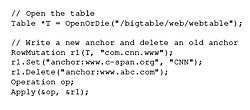Crossflow membrane filtration: Difference between revisions
imported>Justin D. Finkle No edit summary |
imported>Justin D. Finkle |
||
| Line 13: | Line 13: | ||
==Applications of crossflow filtration== | ==Applications of crossflow filtration== | ||
==Membrane fouling== | ==Membrane fouling== | ||
Though fouling is significantly reduced in crossflow membrane systems, as compared with conventional filtration systems, it is still a problem. Depending on the type of filter used and the pore sizes, different problems can arise. Concentration polarization can become exacerbated by gel formation in ultrafiltration systems, and microfiltration of suspended particles can create thick cake layers that reduce transmembrane flux (Harrison, Todd and Rudge). Large, soft particles can adhere to the pores, smaller particles can clog pores, and precipitates can form on the pores all reducing the pore size available and reducing transmembrane flux. Types of pore plugging can be seen in Figure 3 to the left. Gel layer formation can sometimes be reduced by mechanical agitation (Shuler and Kargi). {{Image|Example.jpg|right|250px|Image Caption}} | |||
Revision as of 14:26, 12 December 2010
Crossflow filtration is a term used to refer to a membrane filtration technique in which feed flows parallel to the membrane (Harrison, Todd and Rudge). It is typically characterized by having high tangential fluid velocity and a low velocity normal to the membrane. Crossflow filtration is used in many applications of downstream processing including food processing, pharmaceutical production, and cell separation.
Comparison with conventional filtration
In an ideal crossflow filtration system the flux of permeate through the membrane will reach a steady state. This allows for much easier continuous removal of the target material when compared with conventional filtration. In practical applications, though, a cake builds up along the membrane, increasing in thickness further down the filter, as shown on the diagram to the right.
Additionally, because the fluid flow is parallel to the membrane—rather than normal to it as in a conventional filtration system—shear along the membrane prevents continual cake buildup. This contributes to the easy and continuous removal of the target material and reduces the need for cake washing. Fouling of the membrane can still occur along with concentration polarization
Typical Operation
Dissolved Species
Suspended Species
Concentration Polarization
Applications of crossflow filtration
Membrane fouling
Though fouling is significantly reduced in crossflow membrane systems, as compared with conventional filtration systems, it is still a problem. Depending on the type of filter used and the pore sizes, different problems can arise. Concentration polarization can become exacerbated by gel formation in ultrafiltration systems, and microfiltration of suspended particles can create thick cake layers that reduce transmembrane flux (Harrison, Todd and Rudge). Large, soft particles can adhere to the pores, smaller particles can clog pores, and precipitates can form on the pores all reducing the pore size available and reducing transmembrane flux. Types of pore plugging can be seen in Figure 3 to the left. Gel layer formation can sometimes be reduced by mechanical agitation (Shuler and Kargi).
